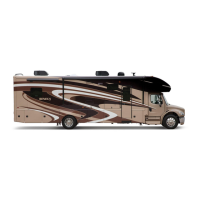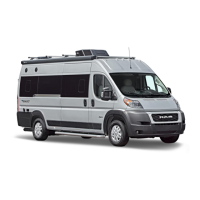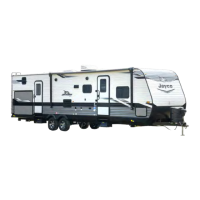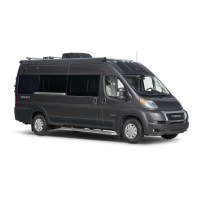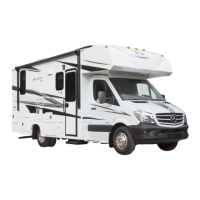45
Proper ination should be monitored closely. Failure to do so could result in the overheating
of a tire causing a blowout. Ination pressure should be as recommended by the tire manu-
facturer or as the federal label for the recreation vehicle indicates.
When you are using your Recreation Vehicle, check ination pressure weekly. Pressure
should be checked when the tires are cold. During travel, tires heat up and pressure increas-
es.
NOTE: Cold tire ination pressure is dened as a tire that has not been used for three or
more hours, or has been driven less than one mile. Tire ination pressure of a hot tire may
show an increase of as much as 6 psi over a cold tire.
Failure to follow proper ination guidelines may result in tire failure, which,
under certain circumstances can cause loss of vehicle control or accidents that
may result in property damage, bodily injury and/or death.
It is recommended that the tire pressure be checked at the beginning of each
trip to obtain the maximum life of the tire. Follow the instructions listed on
the Federal Certication label, to determine the correct tire pressure. Under-
ination may cause tire failures and swaying resulting in loss of control, in-
jury, death or property damage.
Changing A Tire
The motor home is very heavy. Raising the motor home to replace the
spare tire should only be done with extreme caution by a qualied techni-
cian. The vehicle could slip, causing personal injury or death.
Do not use the hydraulic leveling jack system to support the motor home
while under the vehicle or changing tires. The hydraulic leveling system
is designed as a leveling system only. Do not use the hydraulic leveling
jack system as a jack or in conjunction with a jack. It is highly rec-
ommended that, should a tire change be required, it be performed by a
knowledgeable, trained professional.
When replacing a tire, make sure to replace it with a tire of the same size
and specications (refer to your Chassis Guide for assistance).
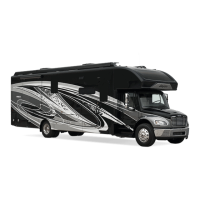
